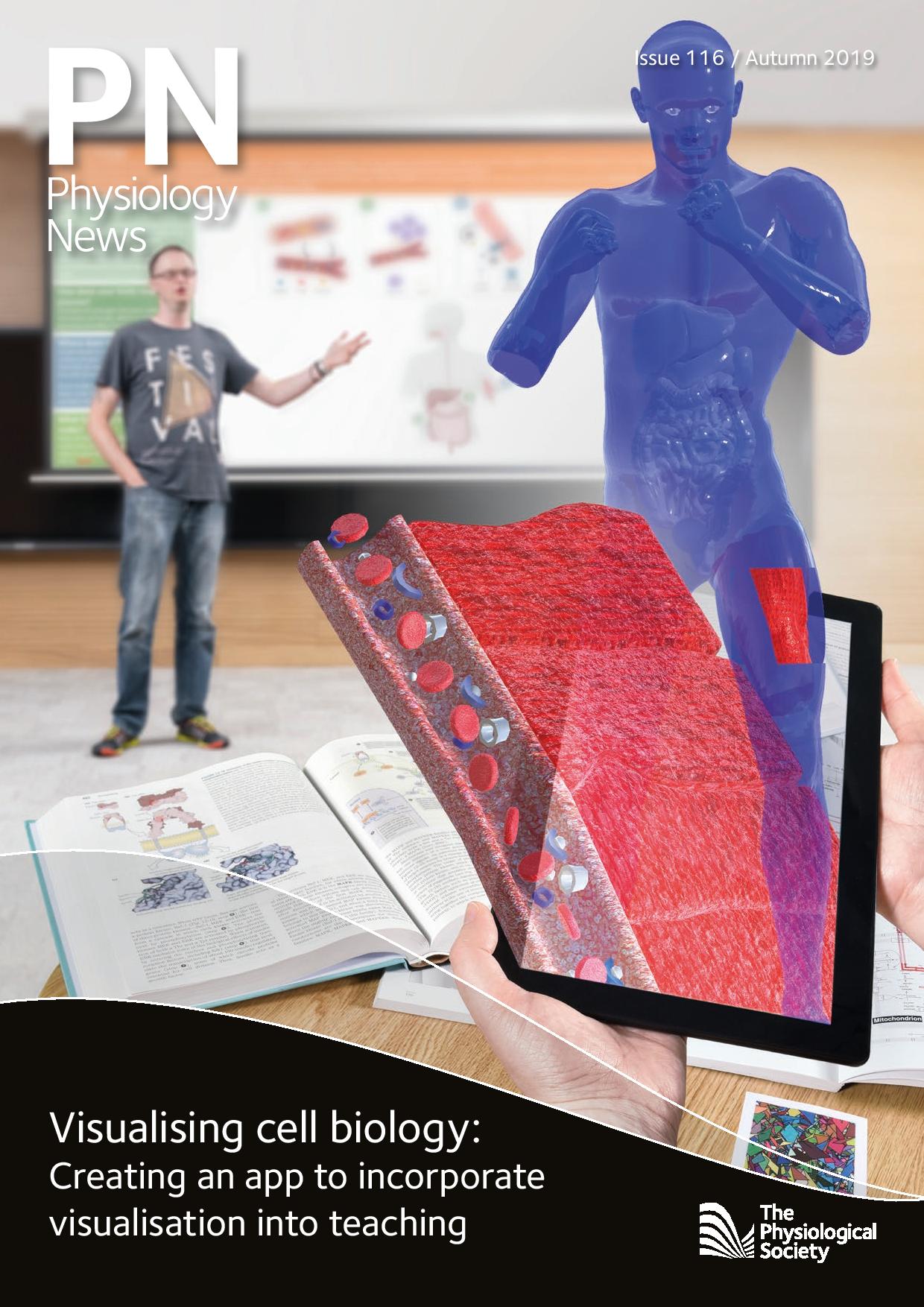
Physiology News Magazine
Book review: Human Metabolism- A Regulatory Perspective
News and Views
Book review: Human Metabolism- A Regulatory Perspective
News and Views
Andrew Murray, University of Cambridge, UK
https://doi.org/10.36866/pn.116.19
Authors of book: Keith Frayn and Rhys Evans
Readers familiar with previous editions of Keith Frayn’s textbook, formerly published as Metabolic Regulation: A Human Perspective, might spot two changes when picking up this newly–revised Fourth Edition. Rhys Evans, a cardiothoracic intensivist and metabolic biochemist, has been brought on board as a co-author whilst the title has been enigmatically tweaked. The latter change reflects the inclusion of significant additional material pertaining to integrative aspects of human metabolism, but perhaps also signals the authors’ intent to reach a broader audience of medical, nursing, sports science and nutrition students, in addition to biochemists and physiologists.
In its previous incarnations, this book was a fine companion to the more traditional biochemistry textbooks, eschewing detailed descriptions of metabolic pathways and instead favouring lively and lucid discussion of the regulatory and integrative aspects of human metabolism. The text benefitted from Frayn’s personable tone and careful use of illustrative examples; an explanation of the comparative storage properties of fats and carbohydrates was, for instance, accompanied by a memorable photograph of 1 kg of potatoes sitting alongside 90 g of olive oil (each representing 3.3 MJ of energy). The result was a highly accessible and very readable text, which became a mainstay on the reading lists of many of us who teach metabolic physiology. The substantial revisions in this new edition lend it the feel of a weightier, more stand-alone volume. Overviews of key pathways of carbohydrate, lipid and protein metabolism have been drafted in, but have helpfully been treated with the same clear and concise tone, with key messages emphasised and the occasional judicious use of analogy, e.g. parallels are drawn between soap manufacture and mobilisation of lipid reserves.
At the core of this book, tissue specificity is highlighted through an analytical, organ by organ account of metabolic function in liver, heart, brain and skeletal muscle, as well as endothelium, enterocytes and immune cells. The revised section on adipose tissue reflects recent research on the importance of brown adipose tissue in humans and factors driving the browning of adipocytes in white adipose tissue. As in previous editions, digestion is dealt with in a separate chapter, and here the authors include up-to-date material on the emerging importance of the human gut microbiome to nutrient acquisition, metabolic signalling and possibly body weight regulation. This section is cross-referenced to a new discussion highlighting the function of metabolites as signalling molecules. A careful line is drawn between these actions and the classic picture of endocrine mechanisms, whilst recognising that the distinction is not as clear as we might once have thought. These, and other hot topics in metabolic research, are handled well throughout; the authors presenting balanced evidence from more controversial areas whilst showing the field to be dynamic, and inspiring prospective researchers amongst the readership.
As with previous editions, the book concludes with a series of chapters covering integrative aspects of metabolic physiology and pathology. Alongside the challenges of exercise and fasting, a new section deals with the metabolic demands of human pregnancy, considering maternal, fetal and placental metabolism and the complex regulatory interplay entailed. This often overlooked area is an exciting yet challenging area of research, with significant implications for lifelong health and is a welcome inclusion here. Similarly, the consideration of metabolic dysregulation in cancer, sepsis and trauma, sits well alongside updated accounts of atherosclerosis and the more classical metabolic diseases of diabetes and obesity. This section will no doubt appeal to medical students, but also rounds off the narrative arc from molecules to whole body, giving this new edition a truly comprehensive feel.
Frayn and Evans have done a marvellous job of updating this textbook to reflect recent developments in metabolic research whilst retaining the core material that made previous editions such a valuable resource. Alongside some of the more cosmetic changes (a two-column format and full-colour illustrations), substantial updates to the content of Human Metabolism: A Regulatory Perspective have broadened its scope to thoroughly cover the basics of metabolic regulation whilst expanding discussion of integrative metabolic physiology and pathology. Happily, the text has lost none of its celebrated readability, and so I now have the relatively simple task of updating my reading list for this coming year’s lectures to recommend this terrific new edition.
